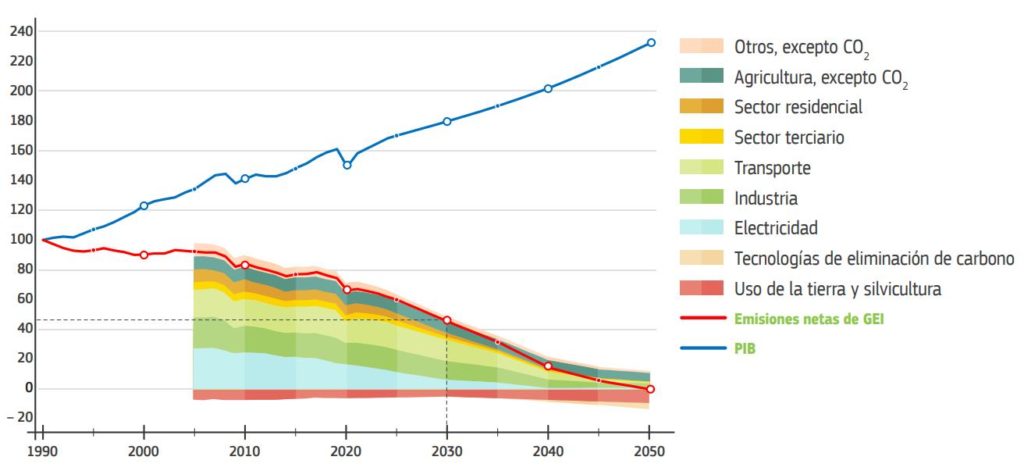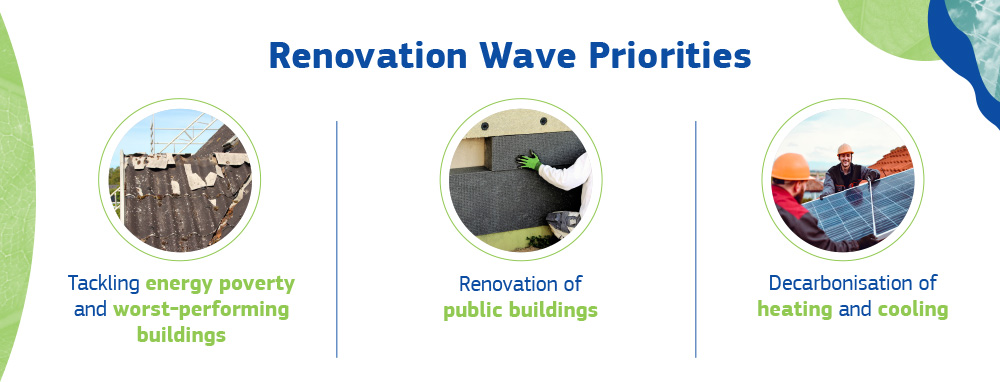It is a reality that the building stock, not only in Spain, but in Europe in general is outdated. Although this can be a positive indication that cities have years and history, and buildings can be heritage with high historical value, the reality is also that a large part of them are not energy efficient. Approximately 85% of European buildings were built before 2001 (according to the Renovation Wave Strategy document)

The specific regulation on thermal insulation of the building envelope appear for the first time around the 70sm which means that buildings over 50 years old (more than 40%) were built without any requirement on energy performance. In general, buildings are responsible for 40% of total energy consumption in the EU, and for 36% of greenhouse gas emissions. It must be taken into account that the current regulations for new construction are strict enough in terms of energy efficiency and emissions (through the Energy Performance of Buildings Directive, the EPBD): since 2019 it is mandatory that all new public buildings be nearly Zero-Energy Buildings (nZEB), and, since the end of last year (2020), it is mandatory for all new buildings. Therefore, the focus is now on meeting better energy efficiency standards in the rest of the building stock.
The COVID-19 crisis that we are experiencing has also put the focus on the buildings, which have become an office for teleworking, a nursery or classroom for children and students, even the main place for entertainment and (online) shopping. Europe sees this as an opportunity to join forces and, while addressing the way to overcome the COVID-19 crisis, also take advantage of the effort that has been made for years in retrofit, to rethink, redesign and modernize the building stock, adapting it to a greener environment and supporting economic recovery.

The European Commission already set in 2018 the long-term objective of being climate neutral in 2050, and last 2020 it established a medium-term objective of reducing greenhouse gas emissions by 2030 by 55% compared to 1990 level. To achieve this objective, buildings must make a great contribution, since they are responsible for a high percentage of these emissions, with approximately a 60% reduction; in addition to a 14% reduction in final energy consumption and 18% in energy consumption for heating and cooling. These are the premises of the Renovation Wave Strategy to improve the energy efficiency of buildings, with the aim of at least double the renovation rates over the next 10 years, thus promoting energy renovation in buildings throughout the European Union.

Furthermore, to support this, Europe is trying to ensure accessible and well-oriented financing, through initiatives within the framework of Next Generation EU the post-pandemic recovery plan, aimed at rebuilding post-COVID-19, which will also have a part for energy refurbishment in buildings.
In view of all this transformation that will take place in Europe, the European Commission has also begun to worry about aesthetics (because, as we said at the beginning, it is about transforming the old building stock, but paying attention to its historical value and as heritage). This is where the new European Bauhaus was recently born, a policy lab to work with citizens, as a participatory initiative to create resilient and inclusive cities, co-designing and co-creating a new style to provide more harmonised and sustainable future; materialising the European Green Deal and accompanying it with an aesthetic that characterises the sustainable transformation.
Is it true that these existing initiatives in the European context help and facilitate the definition of strategies for renovation of the building sector, but, if we were the politician responsible for improving the building stock in our region or municipality, where would we start?
First, it would be necessary to generate the most detailed knowledge possible of the building stock. Well, in this way, the policies on renovation and energy retrofitting in buildings will be more precise and specific to the real problems, and the solutions and financing offered adjusted to the status of the building stock in each case.
For this, we can make use of the public databases of existing buildings. At European level, the Building Stock Observatory (BSO) stands out among others, where information is collected digitally on the status of European buildings, providing a better understanding of the energy performance of buildings through reliable, consistent and comparable data. A relevant data source at European level is also TABULA/EPISCOPE, two European projects, one as the follow-up of the previous one, which provide a database of residential buildings based on defined typologies according to the size, age or other parameters, providing a set of examples for each of the countries analysed representing these building types.
Another important source of information for the characterisation of the building sector is the Energy Performance Certificates (EPCs) (more detailed information on this in a previous entry) of buildings, by analysing the documentation provided in the general registry of each region (autonomous community) or at national level, depending on the country. This certificate, beyond obtaining a label on the building’s energy consumption and its CO2 emissions (with letters from “A” to “F”), contains specific data on the year of construction, the construction characteristics of the building’s thermal envelope, energy systems, proposed measures to improve the energy rating, etc. So it becomes valuable information to know the status of buildings and the actions that could be carried out to improve that status, and to be able to extrapolate it to neighbourhoods, cities, regions and countries.

At CARTIF we participate in different projects aimed at improving knowledge of the building sector, and to support in decision-making that help in the definition of future renovation strategies. For example, in BuiltHub a data collection of the European building stock is carried out, as well as a roadmap is established on how to obtain reliable and useful data for the development of renovation strategies. Other projects, such as ELISE Energy Pilot, MATRYCS and BD4NRG, use the data from the Energy Performance Certificates (EPCs) to get a better knowledge of the status of the building stock in different regions (autonomous communities in the case of Spain), while it also participating in the development of a common certification model for Europe. Or the TEC4ENERPLAN project, where advanced techniques for multi-scale energy planning (from building to region) are developed, and support for the development of tools that serve as the basis for meeting the 2020-2050 energy efficiency goals.
